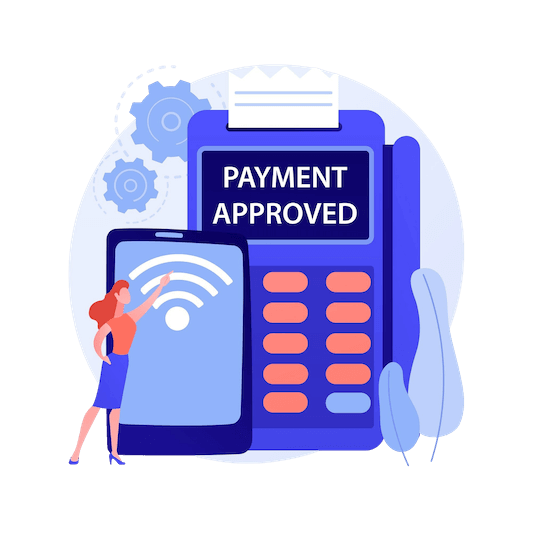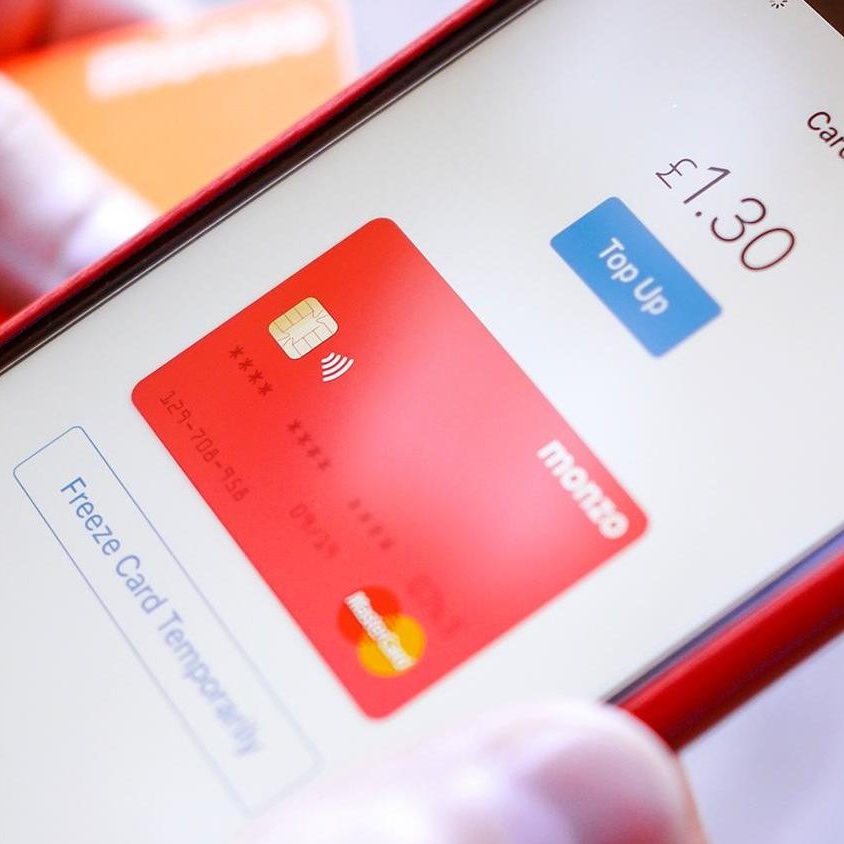
Retailers up and down the UK have implemented payment systems that allow contactless payments, also known as ‘tap and go’. It’s a familiar sight to see consumers tapping their debit card or smart device against a card reader to quickly pay for an item without the need to insert a card and input a PIN.
In 2024, 94% of UK consumers now use contactless payment methods with at least 75% usage in all age groups and regions across the country. The use of contactless payments through mobile phones and smartwatches has proven as popular as credit and debit cards, thanks to the speed and accessibility that they offer. Around a third of the UK’s population has registered for a form of mobile payments, whilst two-thirds of the population use online banking.
Whilst many people have forgone cash in favour of their mobile phones when paying for items, there are still some questions as to whether contactless payments are the better option over the traditional chip and pin or notes and coins.
In this article, we’ll look at how contactless payments have revolutionised the way that consumers pay for products and the various ways that their use can benefit both consumers and businesses alike.

What is contactless payment?
Contactless payment is a method of paying for an item using a device such as a credit or debit card, mobile phone or smartwatch. The device or card is held over a reader, which allows consumers to make a payment without the need for a PIN. This means payments are processed with a quick tap rather than inserting a card into the reader.
This method of payment uses chip technology in payment cards and smart devices. The signal is detected by the card reader when the chip is near, which then communicates the amount of money that needs to be processed in the payment. The payment terminal will state if the payment has been successfully processed. If the payment was not made, the consumer might have to insert their card into the reader and manually enter the PIN.
Continue reading to find out the benefits of contactless payments for both consumers and businesses, as well as the concerns that are associated with this method of payment.
What are the benefits of contactless payments?
Contactless payment methods have become more popular in recent years, which means that many consumers have started shopping with their card or phone in the place of physical cash. Below are a number of reasons that contactless payments have become a standard way to shop for many people.
Consumer benefits
Contactless cards speed up the payment process as consumers simply have to hold their card or device over the reader. They no longer have to insert the card and input their PIN or worry about fishing out the correct amount of cash. The few seconds that are saved per customer can decrease queuing time as the transactions are processed at a more efficient pace.
Consumers are able to carry less on their person when they go out shopping, as a card or phone can often take up less room than a bulky purse or wallet that is full of coins and notes.
Many companies offer loyalty schemes and benefits that consumers can quickly benefit from if they make purchases using their smart device when using contactless payment. The discount may be automatically applied or loyalty points added when a consumer uses a device that is connected to their loyalty account.
Another benefit of contactless payment technology is that it uses secure contactless systems that help to prevent fraudulent purchases. Consumers are able to freeze their accounts if they lose their contactless card or smart device, which prevents thieves from using the card or device to make multiple purchases.
Business benefits
Consumers aren’t the only ones who can benefit from contactless payments. Many businesses have realised the potential of contactless payments in reducing queue sizes and increasing the efficiency of their staff. The reduction of transaction lengths keeps queues moving and reduces a build-up of customers at the tills. This means that fewer staff members have to work behind the tills and can spend time on other tasks. Contactless payments also reduce the time needed to count cash from the tills at the end of each day.
Contactless payment methods can give consumers a smoother purchasing experience and ensures that customers aren’t reduced to making purchases based on the amount of cash that they are carrying. In addition, contactless payments do not carry any extra fees for businesses, which means that they can pay the same fee per contactless transaction as they would on more traditional card payment methods.
Each contactless payment system is also built with dynamic data technologies that discourage hacking attempts and secure customer payments. This advanced security also means that there are fewer disputes that could potentially prevent businesses from accessing their money. Contactless payments are also protected by the fraud prevention systems that banks use, which further dissuades hackers.
These benefits are especially noticeable in cashless events and festivals where the reduction in fraud and queueing times has resulted in a higher spending per consumer. There has also been a drastic decline in the use of plastic tokens in this industry, which not only reduces the cost of making the tokens but also reduces plastic waste in the environment.
What are the concerns associated with contactless payments?
Despite the various benefits of contactless transactions, there are several security concerns that are held by both consumers and businesses alike. These concerns have been largely alleviated in recent years due to the development of contactless technologies, but some fears remain.
Consumer concerns
Perhaps the most common concern over contactless payments is due to the fact that they don’t require PIN authorisation. This means that many consumers worry that there will be multiple fraudulent purchases if the card or smart device is lost or stolen. However, the majority of banks issue a 100% fraud guarantee, which means that they will relieve the consumer of responsibility as long as they were otherwise careful with the use of the contactless payment device.
Whilst many businesses have added contactless payment options to their shops, there are still a number of retailers that are unable to or have chosen not to accommodate and accept contactless payments. This is particularly prevalent amongst independent retailers, which means that consumers cannot always expect to use their contactless card or smart device in every shop.
Another noticeable issue with contactless payments is the limit that has been imposed on their use. Contactless payments often have a transaction cap, which means that consumers cannot spend over a certain amount or use the payment method over a certain amount of times. This can prevent consumers from buying products or mean that they must resort to cash or manually placing the card in the reader and entering the PIN.
There are some technical limitations to contactless payment processing for smart devices. Consumers must have a smartphone that is NFC compliant if they want to use contactless payment when making a purchase, and the card reader they’re paying on must accept contactless payments. If one of the two is missing, contactless payments will not work and consumers will have to pay using the chip and PIN method.
Business concerns
Businesses may find that their customers are wary of contactless payment solutions. This could prevent customers from using contactless cards or smart devices when making purchases because they are worried about fraudulent activity or hackers. Customers are often reluctant to use contactless payment options, despite the fraud detection and multi-layered security systems that are in place.
These customer concerns could prevent businesses from completely adopting a contactless system in their shops as they don’t want to miss out on sales and would prefer to rely on cash and manual card payment options.
FAQs
What are the methods for contactless payments?
There are various devices that consumers can make contactless payments. They include the following:
- debit card
- credit card
- mobile phone
- smartwatch
- key fob
- stickers
Credit and debit cards can be activated to make contactless payments through the bank that has issued them. Consumers can also set up their banking details through systems such as Google Pay and Apple Pay, which allow them to make purchases through their online accounts via their smart devices.
It’s easy to set up both Apple Pay and Google Pay on your NFC-enabled mobile device. They both use fingerprint recognition, facial recognition, or PIN code verification to authenticate transactions which means that contactless payments cannot be used if the phone is stolen.
The purchase information will be added to the consumer’s credit or debit card statement. The amount will need to be paid in full each month; otherwise, the consumer will have to pay interest charges, and their credit score may be affected.
Consumers can use contactless payment in stores that have the contactless symbol on the card reader. This is the same symbol (consisting of four curved lines) that will appear on their contactless card. The card reader will indicate that the payment has been successful by beeping or flashing a green light. Customers can ask for receipts from these transactions so that they can see that the payment was successfully made and that they were charged the correct amount.
What is the spending limit on contactless payments? 
The transaction limit for contactless payments in the UK has changed several times over the years. When contactless credit and debit cards were introduced in 2007, the cap was a modest £10 per transaction. The limit rose to £15, followed by an increase to £20 and then £30 in the following 13 years. The limit stayed at £45 between 2020 and 2021 until it more than doubled to £100 in October 2021.
There is no spending limit if consumers use two-factor authorisation through contactless payment methods such as Apple Pay and Google Pay on smart devices.
There isn’t a daily limit for the number of times that a consumer can use their contactless payment method. However, they may need to manually insert their card from time to time and enter the PIN to verify their identity. After this point, consumers should be able to resume contactless payments.
It is highly unlikely that consumers will accidentally be charged multiple times for a single purchase. This is because the transaction is complete once the card or smart device has been placed on the reader. The payment terminals have been designed so that consumers aren’t overcharged.
Some terminals may ask you only to present one card if it detects two, or the terminal will cancel the transaction and ask the customer to insert the card to make the payment manually.
Summary
Contactless payment is fast becoming the most common way for consumers to pay for products in the UK. Many bank cards are inbuilt with contactless technology that allows users to tap their card against the reader rather than manually insert it and type in their PIN. Smart devices such as mobile phones and smartwatches can also be used for contactless payment, using systems such as Google Pay and Apple Pay.
Businesses can benefit from a reduction in queue lengths as contactless payment systems help customers to pay for their items quickly and efficiently. This allows staff members to spend time on other tasks rather than staying behind the till for their entire shift. Customers can also benefit from loyalty schemes and discounts when they use their smart devices to pay for products, as many shops allow them to connect their mobile phones with their customer accounts to apply these benefits to their purchases automatically.
Many consumers are wary of contactless payment as they are concerned about hackers and thieves. However, contactless payments are encrypted with multiple layers of security that prevent the signal from being interrupted. Consumers are also able to freeze their cards so that no further purchases can be made if they lose their card or it is stolen. This can be done by contacting their bank or through online banking.



